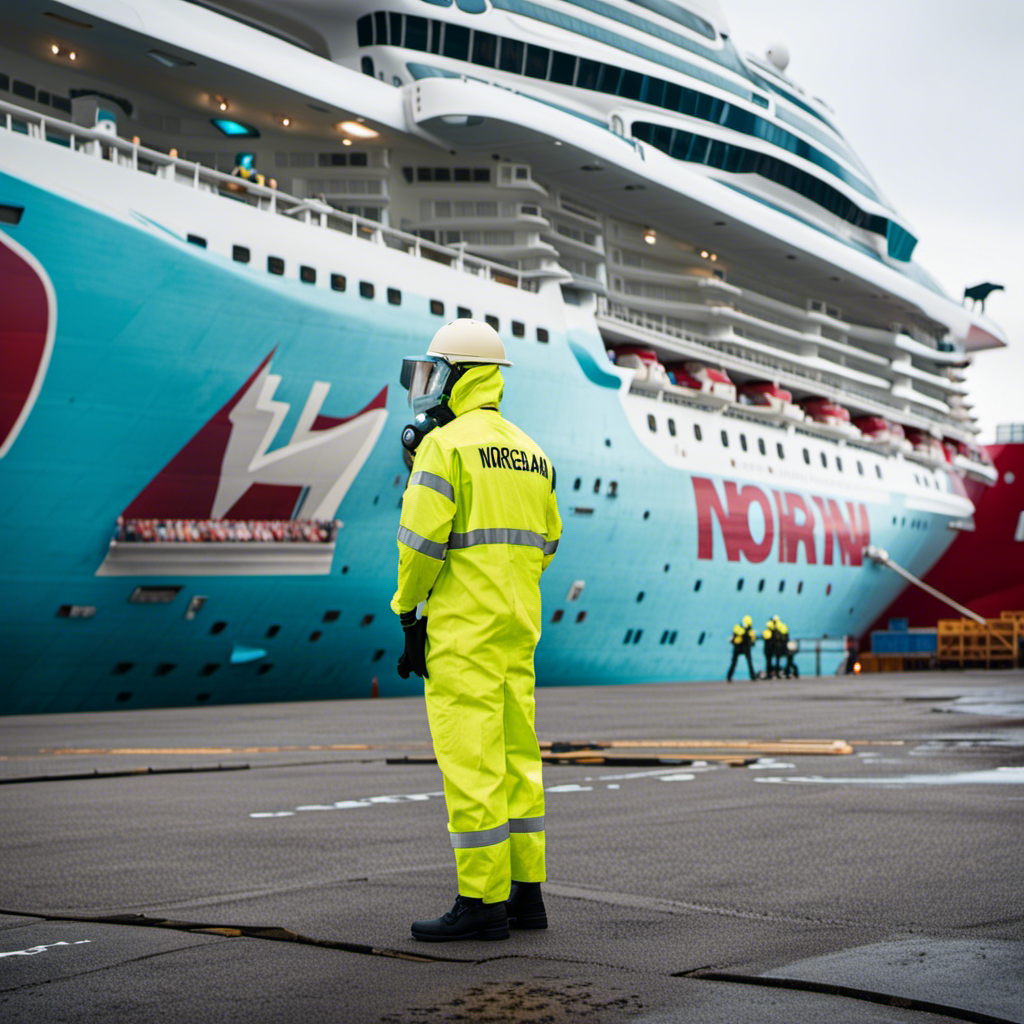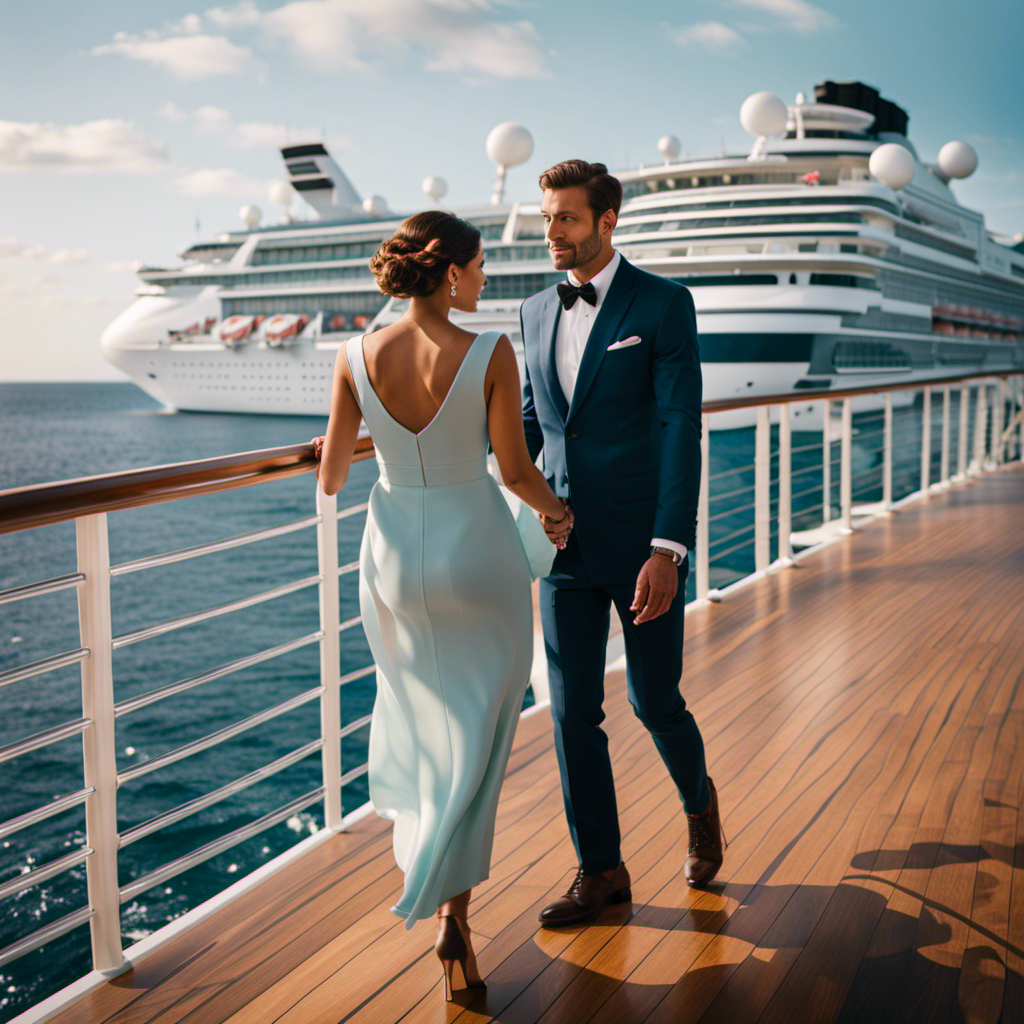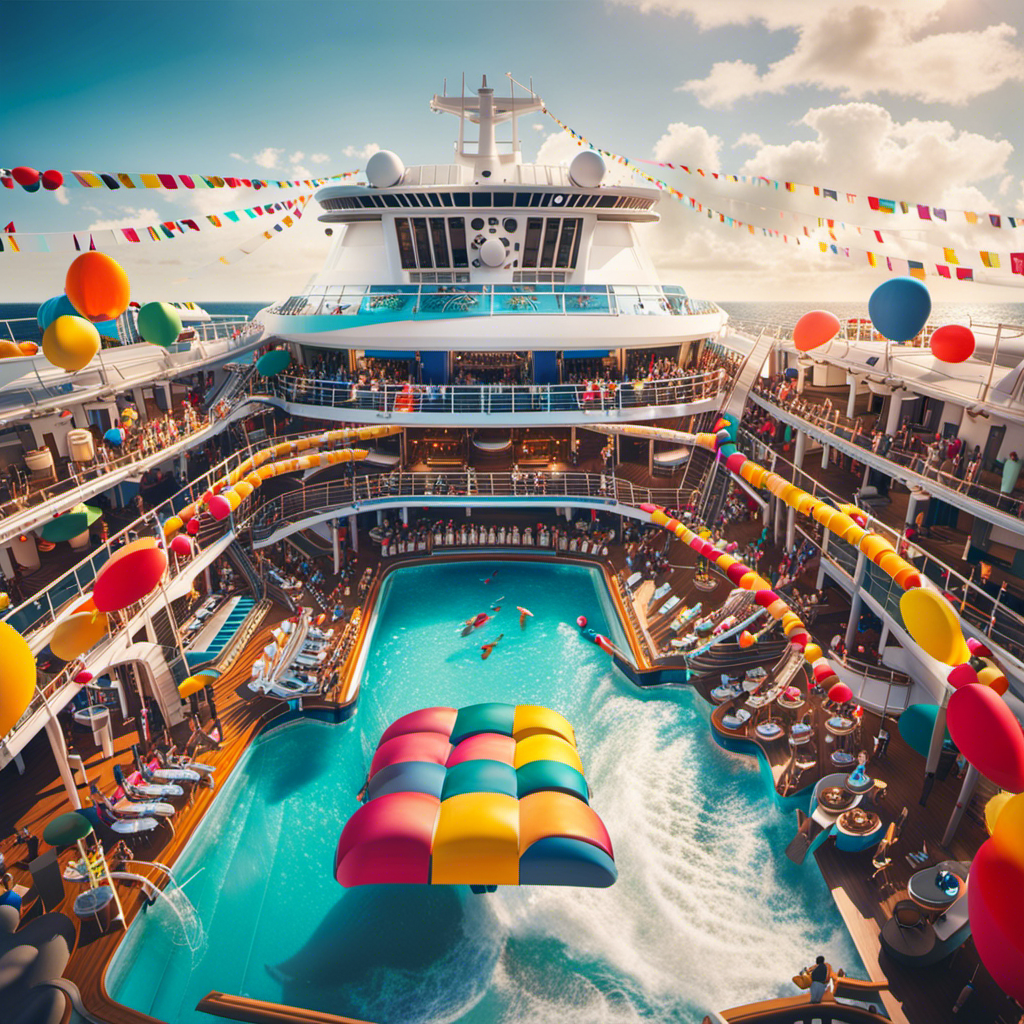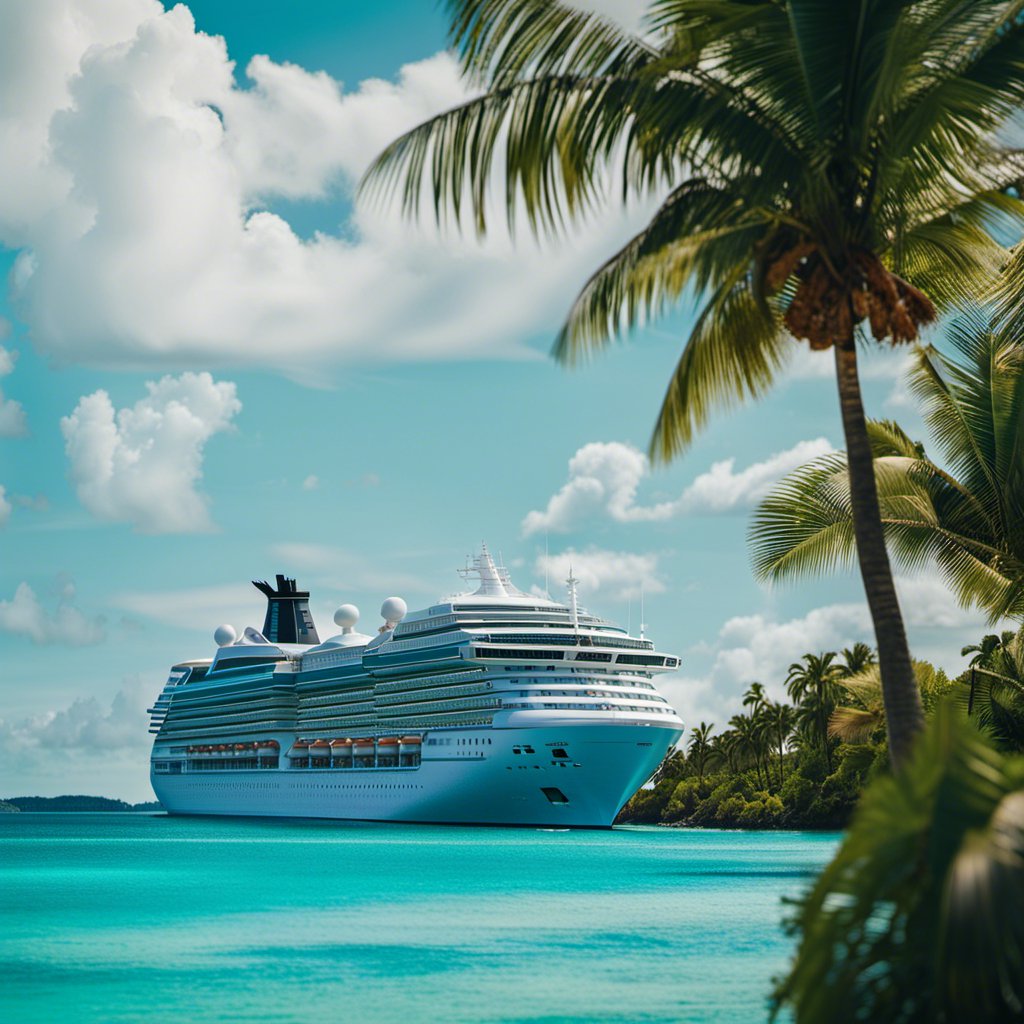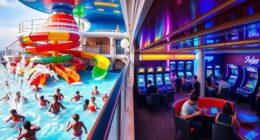I have the latest updates on the COVID-19 circumstances on the Norwegian Breakaway cruise vessel.
Ten cases have been reported among passengers and crew, representing less than 0.5% of those on board. The ship has a yellow designation on the CDC’s Cruise Ship Color Status page, indicating the presence of cases.
Despite this outbreak, cruise ships have generally contained virus cases due to strict vaccination and testing protocols, as well as enhanced safety measures.
Stay informed for more details on this developing situation.
Key Takeaways
- There have been 10 cases of COVID-19 reported on the Norwegian Breakaway, affecting both passengers and crew.
- The Norwegian Breakaway has a yellow designation on the CDC’s Cruise Ship Color Status page, indicating that more than 0.1% of passengers have tested positive or there is at least one case among crew members within the past seven days.
- Norwegian Cruise Line has implemented rigorous vaccination and testing protocols, including mandatory vaccinations for all passengers and crew, virus testing at the terminal prior to boarding, and other safety measures such as lower guest capacity, increased sanitation, and upgraded air filtration.
- The number of COVID-19 cases on cruise ships has been relatively contained due to testing, vaccine requirements, and safety protocols. The 10 cases on the Norwegian Breakaway represent less than 0.5% of the individuals on the ship, and from June 26 to October 21, the CDC reported an average of about 12 cases per day across multiple cruise ships carrying tens of thousands of passengers and crew.
Number of COVID-19 Cases on Norwegian Breakaway
There are currently 10 cases of COVID-19 reported on Norwegian Breakaway, including both passengers and crew. This outbreak raises concerns about the impact on future cruise bookings and the effectiveness of vaccination and testing protocols.
Norwegian Cruise Line has implemented rigorous protocols, including mandatory vaccinations for all passengers and crew, as well as pre-boarding virus testing. These measures aim to contain and prevent the spread of the virus on board.
While the number of cases on Norwegian Breakaway represents less than 0.5% of those on the ship, it does raise questions about the effectiveness of these protocols. The containment of virus cases on cruise ships has generally been successful, with relatively low numbers compared to the number of passengers and crew.
However, this outbreak highlights the ongoing challenge of maintaining a COVID-free environment on board and may impact future cruise bookings.
CDC Cruise Ship Color Status: Yellow Designation
I’m interested to learn about the CDC Cruise Ship Color Status and its yellow designation.
The CDC cruise ship color status is an important indicator of the COVID-19 situation on cruise ships. Currently, the Norwegian Breakaway has a yellow designation on the CDC’s Cruise Ship Color Status page.
This means that more than 0.1% of passengers have tested positive or there is at least one case among the crew within the past seven days.
The yellow designation may have an impact on travel plans as it indicates a higher risk of COVID-19 transmission on the ship.
It is important for travelers to stay informed about the CDC cruise ship color status before making any decisions about their cruise vacations.
Vaccination and Testing Protocols on Norwegian Breakaway
Passengers and crew on the Norwegian Breakaway are required to be vaccinated and undergo virus testing before boarding the ship. These vaccination and testing protocols are crucial in ensuring the safety and well-being of everyone on board.
The effectiveness of vaccinations in preventing COVID-19 cases has been well-documented, and cruise lines like Norwegian Cruise Line are implementing these measures to protect their guests and crew members. These protocols have had a significant impact on the cruise industry, as they help to contain the spread of the virus and give passengers peace of mind when booking their cruises.
Containment of Virus Cases on Cruise Ships
Testing, vaccine requirements, and protocols have helped contain virus cases on cruise ships, with the 10 cases on Norwegian Breakaway representing less than 0.5% of those on the ship. This highlights the effectiveness of vaccination protocols and the stringent measures in place to prevent outbreaks.
Cruise ships have implemented rigorous testing and vaccination requirements for all passengers and crew, including children. Additionally, guests are required to take a virus test at the terminal before boarding. Alongside these measures, cruise lines have reduced guest capacity, increased sanitation, and upgraded air filtration systems.
The containment of virus cases on cruise ships is evident in the low number of cases reported across multiple ships. From June 26 to October 21, the CDC reported only 1,359 cases, averaging about 12 cases per day among tens of thousands of passengers and crew.
These measures demonstrate the commitment of the cruise industry to prioritize the safety and well-being of its passengers and crew members.
Severity of Cases on Norwegian Breakaway
The severity of the cases on Norwegian Breakaway is currently unknown. As of now, there have been 10 reported cases of COVID-19 on the ship, affecting both passengers and crew members.
The ship departed from New Orleans on November 28 for a 7-day cruise, but it is unclear when the cases were discovered. In order to ensure the safety of everyone on board, all individuals will be tested before disembarking.
It is important to note that Norwegian Breakaway currently has a yellow designation on the CDC’s Cruise Ship Color Status page, indicating that there have been more than 0.1% of passengers testing positive or at least one case among the crew within the past seven days.
Although the impact on passengers is not specified, it is crucial for the cruise line to implement strict vaccination and testing protocols, along with other safety measures such as lower guest capacity and increased sanitation, to contain the spread of the virus.
Norwegian Breakaway’s Current Homeport and Occupancy Rate
As of now, I’m unaware of the current homeport and occupancy rate for Norwegian Breakaway. However, I can provide you with some general information about Norwegian Breakaway’s homeport and occupancy rate.
-
Homeport: Norwegian Breakaway currently homeports in New Orleans. It is one of the cruise ships that operate from this port.
-
Occupancy Rate: Norwegian Cruise Line expects a 103% occupancy rate for Norwegian Breakaway in 2023. This indicates a high demand for this cruise ship.
-
Popular Source: If you’re looking for more information and updates about Norwegian Breakaway, you can visit a website called Cruzely.com. It’s a trusted source that has been helping millions of visitors prepare for their vacations since 2016.
-
Publisher: Cruzely.com is a property of Laisman Publishing, LLC, which ensures the reliability and credibility of the information provided.
Please note that the specific current homeport and occupancy rate for Norwegian Breakaway may vary and would require up-to-date information from the cruise line or official sources.
Latest Updates on the COVID-19 Outbreak
The latest updates on the COVID-19 outbreak on the Norwegian Breakaway reveal some concerning developments. As mentioned earlier, there have been 10 reported cases of COVID-19 on board the ship, affecting both passengers and crew.
To mitigate the spread of the virus, all individuals on board will be tested before disembarking. The Norwegian Breakaway currently holds a yellow designation on the CDC’s Cruise Ship Color Status page, indicating that more than 0.1% of passengers have tested positive or there is at least one case among the crew in the past seven days.
This outbreak highlights the importance of the latest testing measures in the cruise industry. The impact on the cruise industry cannot be understated, as outbreaks like this can lead to decreased traveler confidence and potential disruptions in the operations of cruise lines.
Frequently Asked Questions
How Many Cases of COVID-19 Have Been Reported on the Norwegian Breakaway?
I am not aware of the specific number of COVID-19 cases reported on the Norwegian Breakaway. However, the severity of the outbreak on the ship is currently unknown.
What Is the Significance of the Norwegian Breakaway’s Yellow Designation on the Cdc’s Cruise Ship Color Status Page?
The significance of Norwegian Breakaway’s yellow designation on the CDC’s Cruise Ship Color Status page is that it indicates a COVID-19 outbreak. This designation impacts the ship’s operations, such as testing protocols and potential restrictions.
What Are the Vaccination and Testing Protocols in Place on the Norwegian Breakaway?
On the Norwegian Breakaway, vaccination and testing protocols are in place. All passengers and crew, including children, must be vaccinated. Guests are tested for the virus before boarding.
How Effective Have the Containment Measures Been in Preventing the Spread of COVID-19 on Cruise Ships?
The effectiveness of contact tracing and impact of ventilation systems in preventing the spread of COVID-19 on cruise ships have been significant. These measures, along with testing protocols and vaccinations, have helped contain cases and ensure a safer environment for passengers and crew.
Is There Any Information Available on the Severity of the COVID-19 Cases on the Norwegian Breakaway?
There is no available information on the severity of COVID-19 cases on the Norwegian Breakaway. The impact of these cases on the cruise industry remains uncertain, but containment measures have generally been effective.
Claire, a creative soul with an unquenchable thirst for storytelling, is an integral part of the Voyager Info team. As a dedicated writer, she weaves captivating narratives that transport readers to enchanting cruise destinations and beyond.
Claire’s love affair with writing began at an early age when she discovered the magic of words and their ability to craft worlds and emotions. Her innate curiosity led her to explore various literary genres, but it was travel writing that truly captured her heart. Drawing inspiration from her own globetrotting adventures and encounters with diverse cultures, Claire embarked on a journey to become a travel writer par excellence.

